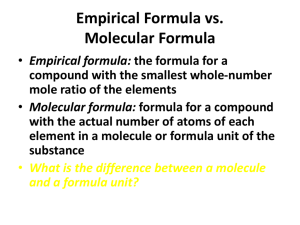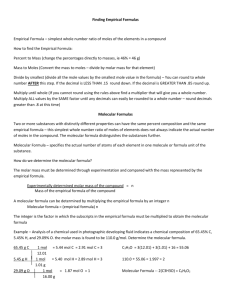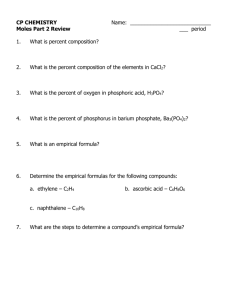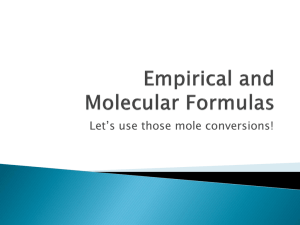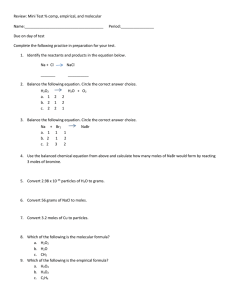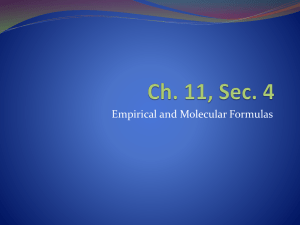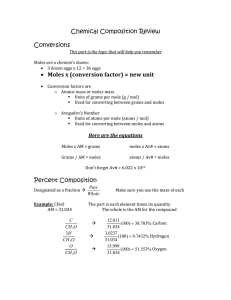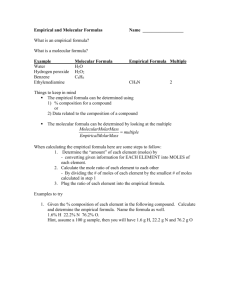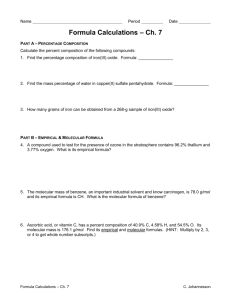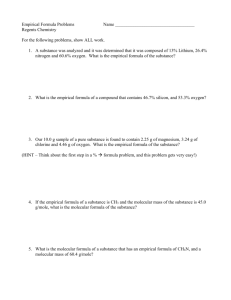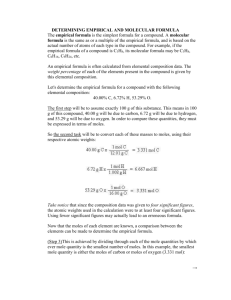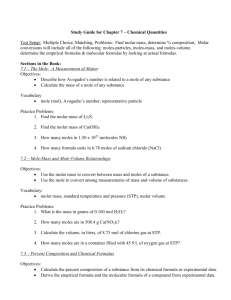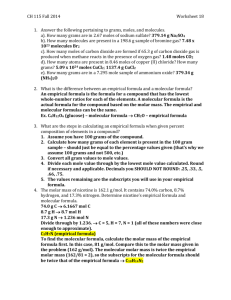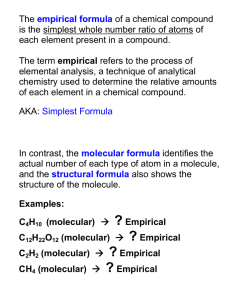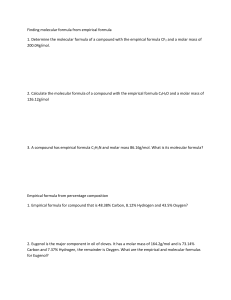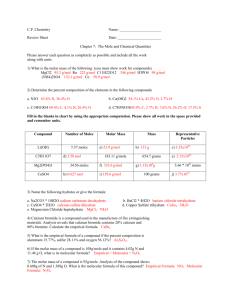Quiz 18
advertisement
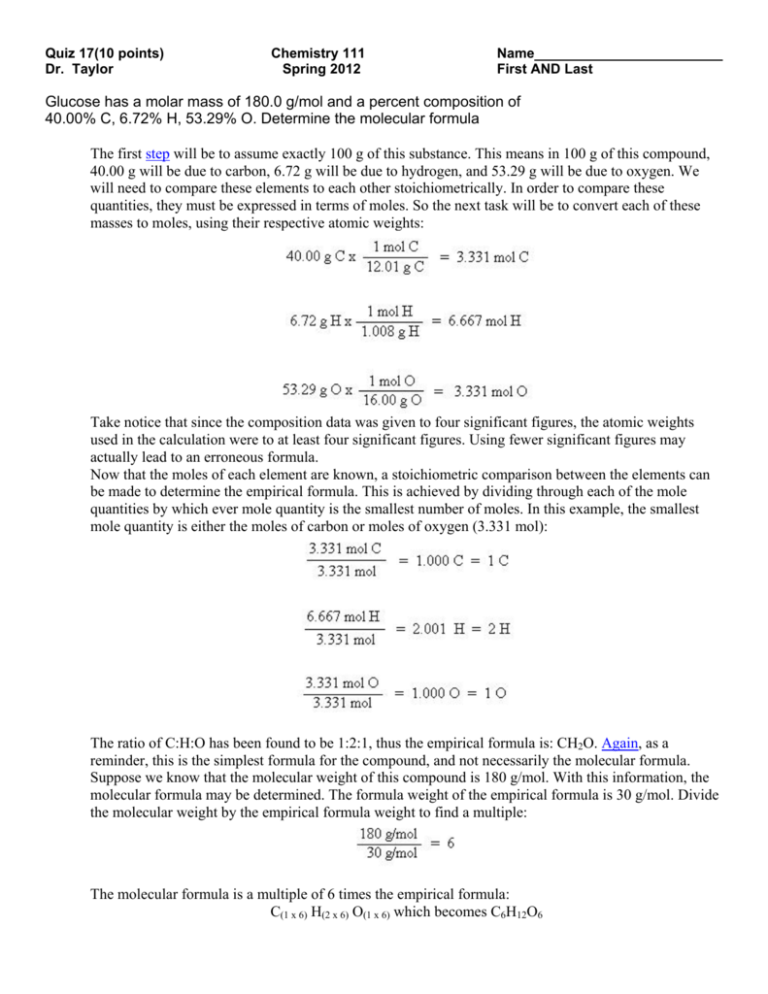
Quiz 17(10 points) Dr. Taylor Chemistry 111 Spring 2012 Name First AND Last Glucose has a molar mass of 180.0 g/mol and a percent composition of 40.00% C, 6.72% H, 53.29% O. Determine the molecular formula The first step will be to assume exactly 100 g of this substance. This means in 100 g of this compound, 40.00 g will be due to carbon, 6.72 g will be due to hydrogen, and 53.29 g will be due to oxygen. We will need to compare these elements to each other stoichiometrically. In order to compare these quantities, they must be expressed in terms of moles. So the next task will be to convert each of these masses to moles, using their respective atomic weights: Take notice that since the composition data was given to four significant figures, the atomic weights used in the calculation were to at least four significant figures. Using fewer significant figures may actually lead to an erroneous formula. Now that the moles of each element are known, a stoichiometric comparison between the elements can be made to determine the empirical formula. This is achieved by dividing through each of the mole quantities by which ever mole quantity is the smallest number of moles. In this example, the smallest mole quantity is either the moles of carbon or moles of oxygen (3.331 mol): The ratio of C:H:O has been found to be 1:2:1, thus the empirical formula is: CH2O. Again, as a reminder, this is the simplest formula for the compound, and not necessarily the molecular formula. Suppose we know that the molecular weight of this compound is 180 g/mol. With this information, the molecular formula may be determined. The formula weight of the empirical formula is 30 g/mol. Divide the molecular weight by the empirical formula weight to find a multiple: The molecular formula is a multiple of 6 times the empirical formula: C(1 x 6) H(2 x 6) O(1 x 6) which becomes C6H12O6


